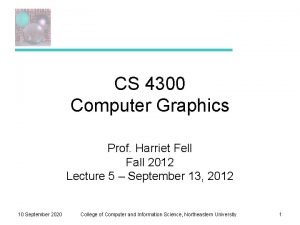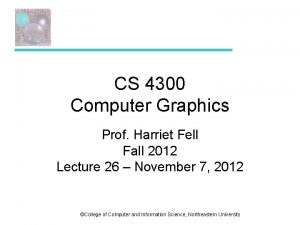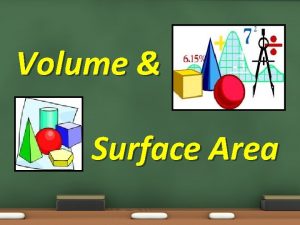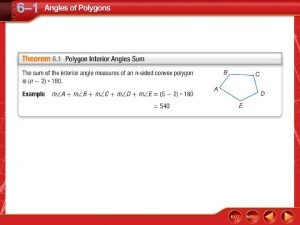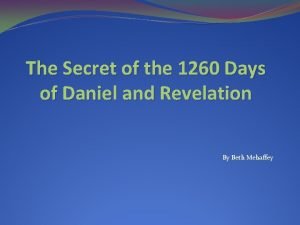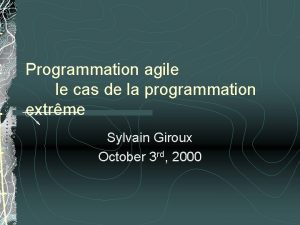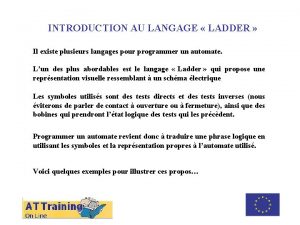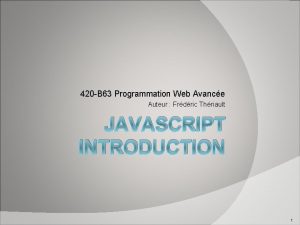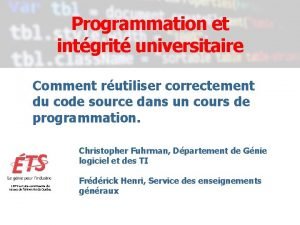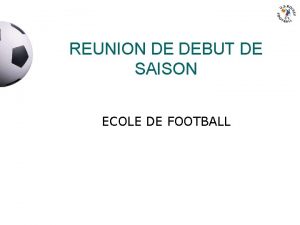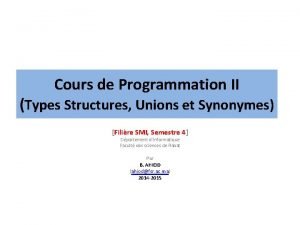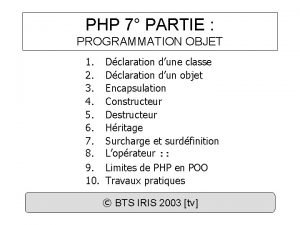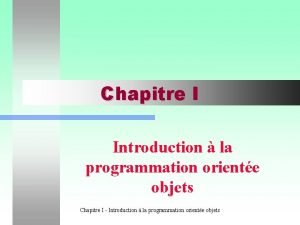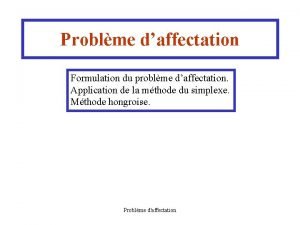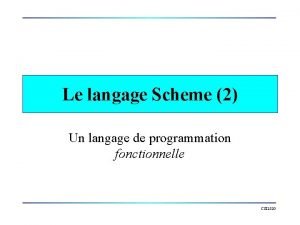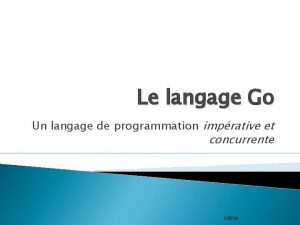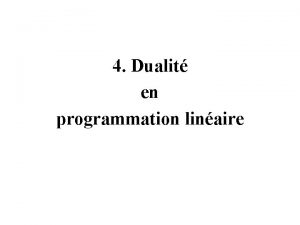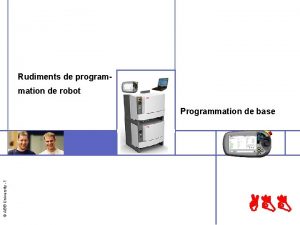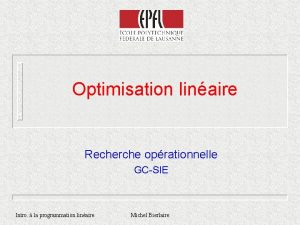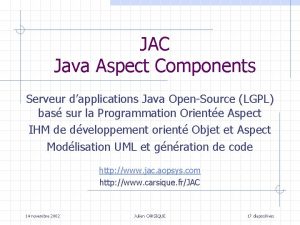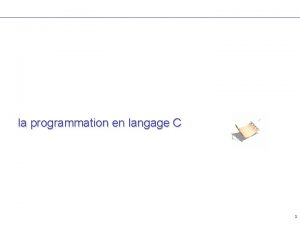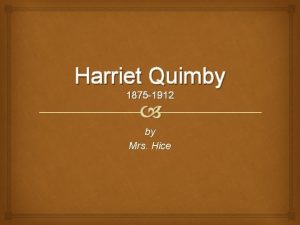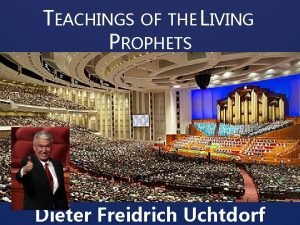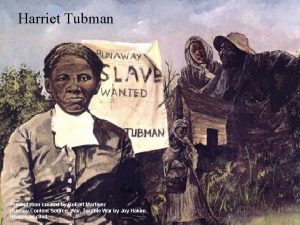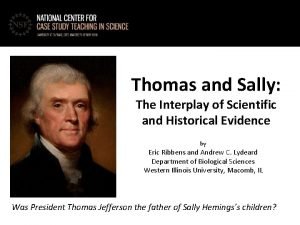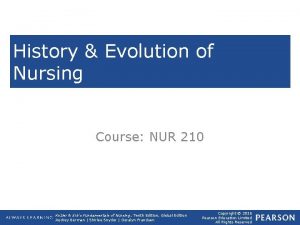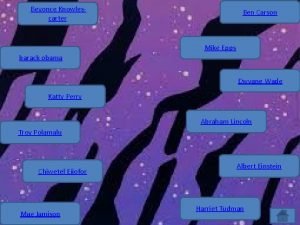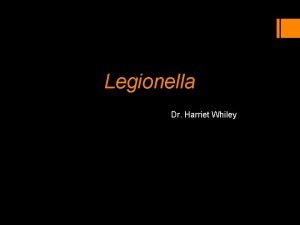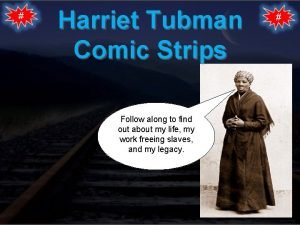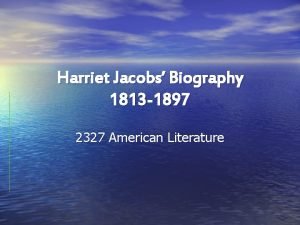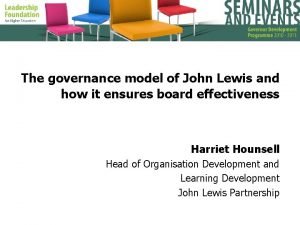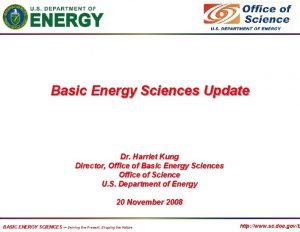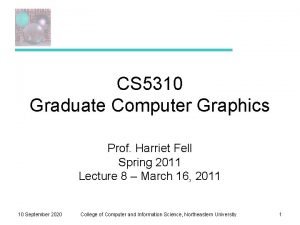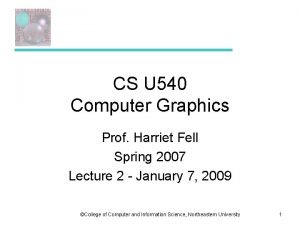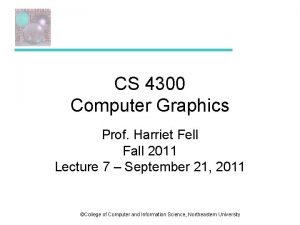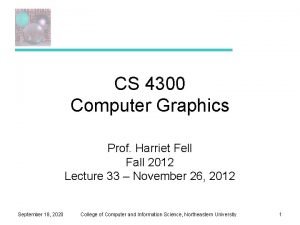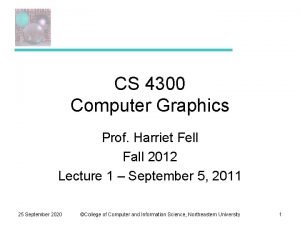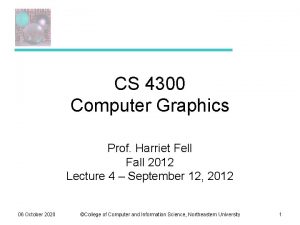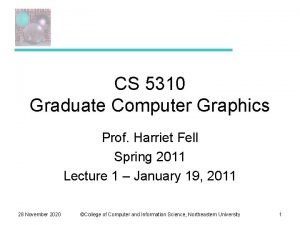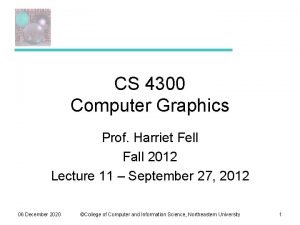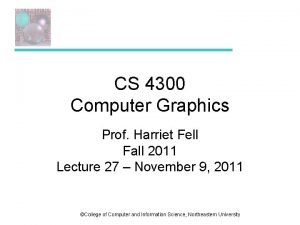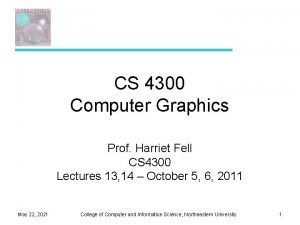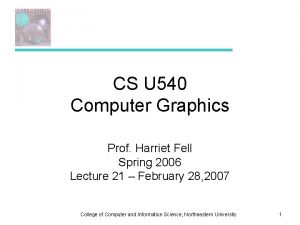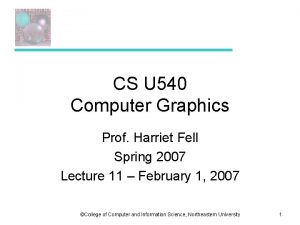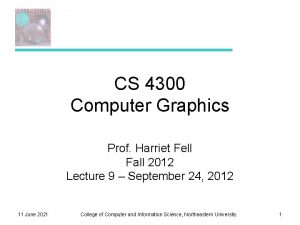IS 1260 Programmation From Prof Harriet Fell lecture






![What is a Scene class Scene: def __init__(self): self. objects = [] self. lights What is a Scene class Scene: def __init__(self): self. objects = [] self. lights](https://slidetodoc.com/presentation_image_h/7cedccc3592cd8ba1a8c719cf2dfc396/image-7.jpg)










































- Slides: 49

IS 1260 Programmation From Prof. Harriet Fell lecture 21 November 2020 ECP – IS 1260

Today’s Topics Ray Tracing __________ • Basic Light Model • Advanced Light Model • Basic Shadow Model 21 November 2020 ECP – IS 1260

Ray Tracing 21 November 2020 ECP – IS 1260

What is a Sphere A Python class with the following attributes: numpy. array double numpy. array Material 11/21/2020 center; radius; [R, G, B]; mat // 3 doubles // for RGB colors between 0 and 1 ECP – IS 1260

What is a Material A Python class with the following attributes: double (double int pic; 21 November 2020 kd; // diffuse coeficient ks; // specular coefficient ka; // ambient light coefficient) kgr; // global reflection coefficient kt; // transmitting coefficient // > 0 if picture texture is used ECP – IS 1260

-. 01 500 800 // 1 // antialias 1 // numlights 100 500 800 // Lx, Ly, 9 // numspheres //cx cy cz radius R -100 0 40. 9 -100 0 40. 9 0 -100 0 40. 9 0 100 0 40. 9 100 -100 0 40. 9 100 100 0 40. 9 21 November 2020 ECP – IS 1260 transform theta phi mu distance Lz G 0 0 0 0 0 B 0 0 0 0 0 ka. 2. 2. 2 kd. 9. 8. 7. 6. 5. 4. 3. 2. 1 ks spec. Exp kgr kt pic. 0 4 0 0 0. 1 8. 1 0 0. 2 12. 2 0 0. 3 16. 3 0 0. 4 20. 4 0 0. 5 24. 5 0 0. 6 28. 6 0 0. 7 32. 7 0 0. 8 36. 8 0 0
![What is a Scene class Scene def initself self objects self lights What is a Scene class Scene: def __init__(self): self. objects = [] self. lights](https://slidetodoc.com/presentation_image_h/7cedccc3592cd8ba1a8c719cf2dfc396/image-7.jpg)
What is a Scene class Scene: def __init__(self): self. objects = [] self. lights = [] def add_object(self, s): self. objects. append(s) def add_light(self, l): self. lights. append(l) 21 November 2020 ECP – IS 1260

Simple Ray Casting for Detecting Visible Surfaces select window on viewplane and center of projection for (each scanline in image) { for (each pixel in the scanline) { determine ray from center of projection through pixel; for (each object in Scene) { if (object is intersected and is closest considered thus far) record intersection and object name; } set pixel’s color to that of closest object intersected; } } 21 November 2020 ECP – IS 1260

Ray Trace 1 Finding Visible Surfaces 21 November 2020 ECP – IS 1260

Ray-Sphere Intersection • Given § Sphere • Center (cx, cy, cz) • Radius, R § Ray from P 0 to P 1 • P 0 = (x 0, y 0, z 0) and P 1 = (x 1, y 1, z 1) § View Point • (Vx, Vy, Vz) • Project to window from (0, 0, 0) to (w, h, 0) 21 November 2020 ECP – IS 1260

Sphere Equation y Center C = (cx, cy, cz) (x, y, z) Radius R R (cx, cy, cz) z 21 November 2020 ECP – IS 1260 x

Ray Equation P 0 = (x 0, y 0, z 0) and P 1 = (x 1, y 1, z 1) P 1 T P 0 The ray from P 0 to P 1 is given by: P(t) = (1 - t)P 0 + t. P 1 = P 0 + t(P 1 - P 0) 21 November 2020 ECP – IS 1260 0 <= t <= 1

Intersection Equation P(t) = P 0 + t(P 1 - P 0) 0 <= t <= 1 is really three equations x(t) = x 0 + t(x 1 - x 0) y(t) = y 0 + t(y 1 - y 0) z(t) = z 0 + t(z 1 - z 0) 0 <= t <= 1 Substitute x(t), y(t), and z(t) for x, y, z, respectively in 21 November 2020 ECP – IS 1260

Solving the Intersection Equation is a quadratic equation in variable t. For a fixed pixel, VP, and sphere, x 0, y 0, z 0, x 1, y 1, z 1, cx, cy, cz, and R eye pixel sphere all constants. We solve for t using the quadratic formula. 21 November 2020 ECP – IS 1260

The Quadratic Coefficients Set dx = x 1 - x 0 dy = y 1 - y 0 dz = z 1 - z 0 Now find the coefficients: 21 November 2020 ECP – IS 1260

Computing Coefficients 21 November 2020 ECP – IS 1260

The Coefficients 21 November 2020 ECP – IS 1260

Solving the Equation 21 November 2020 ECP – IS 1260

The Nearest Intersection The intersection nearest P 0 is given by: To find the coordinates of the intersection point: 21 November 2020 ECP – IS 1260

First Lighting Model • Ambient light is a global constant. Ambient Light = ka (AR, AG, AB) ka is in the “World of Spheres” 0 <= ka <= 1 (AR, AG, AB) = average of the light sources (AR, AG, AB) = (1, 1, 1) for white light • Color of object S = (SR, SG, SB) • Visible Color of an object S with only ambient light CS= ka (AR SR, AG SG, AB SB) • For white light CS= ka (SR, SG, SB) 21 November 2020 ECP – IS 1260

Visible Surfaces Ambient Light 21 November 2020 ECP – IS 1260

Second Lighting Model • Point source light L = (LR, LG, LB) at (Lx, Ly, Lz) • Ambient light is also present. • Color at point p on an object S with ambient & diffuse reflection Cp= ka (AR SR, AG SG, AB SB)+ kd kp(LR SR, LG SG, LB SB) • For white light, L = (1, 1, 1) Cp= ka (SR, SG, SB) + kd kp(SR, SG, SB) • • kp depends on the point p on the object and (Lx, Ly, Lz) kd depends on the object (sphere) ka is global ka + kd <= 1 21 November 2020 ECP – IS 1260

Diffuse Light 21 November 2020 ECP – IS 1260

Lambertian Reflection Model Diffuse Shading • For matte (non-shiny) objects • Examples § Matte paper, newsprint § Unpolished wood § Unpolished stones • Color at a point on a matte object does not change with viewpoint. 21 November 2020 ECP – IS 1260

Physics of Lambertian Reflection • Incoming light is partially absorbed and partially transmitted equally in all directions 21 November 2020 ECP – IS 1260

Geometry of Lambert’s Law N N L θ L d. A 90 - θ θ d. Acos(θ) 90 - θ Surface 1 21 November 2020 ECP – IS 1260 Surface 2

Cos(θ)=N×L N θ L d. A 90 - θ θ d. Acos(θ) 90 - θ Surface 2 Cp= ka (SR, SG, SB) + kd N×L (SR, SG, SB) 21 November 2020 ECP – IS 1260

Finding N N = (x-cx, y-cy, z-cz) |(x-cx, y-cy, z-cz)| normal (x, y, z) radius (cx, cy, cz) 21 November 2020 ECP – IS 1260

Diffuse Light 2 21 November 2020 ECP – IS 1260

Shadows on Spheres 21 November 2020 ECP – IS 1260

More Shadows 21 November 2020 ECP – IS 1260

Sh ad ow R ay Finding Shadows P Pixel gets shadow color 21 November 2020 ECP – IS 1260

Shadow Color • Given Ray from P (point on sphere S) to L (light) P= P 0 = (x 0, y 0, z 0) and L = P 1 = (x 1, y 1, z 1) • Find out whether the ray intersects any other object (sphere). § If it does, P is in shadow. § Use only ambient light for pixel. 21 November 2020 ECP – IS 1260

Shape of Shadows 21 November 2020 ECP – IS 1260

Different Views 21 November 2020 ECP – IS 1260

Planets 21 November 2020 ECP – IS 1260

Starry Skies 21 November 2020 ECP – IS 1260

Shadows on the Plane 21 November 2020 ECP – IS 1260

Finding Shadows on the Back Plane a ay R w do Sh Pixel in Shadow 21 November 2020 ECP – IS 1260 P

Close up 21 November 2020 ECP – IS 1260

On the Table 21 November 2020 ECP – IS 1260

Phong Highlight 21 November 2020 ECP – IS 1260

Phong Lighting Model Light The viewer only sees the light when α is 0. Normal Reflected N L View R V θ θ α Surface 21 November 2020 ECP – IS 1260 We make the highlight maximal when α is 0, but have it fade off gradually.

Phong Lighting Model Cos(α) = R×V We use cosn(α). The higher n is, the faster the drop off. N L R V θ θ α For white light Surface Cp= ka (SR, SG, SB) + kd N�L (SR, SG, SB) + ks (R�V)n(1, 1, 1) 21 November 2020 ECP – IS 1260

Powers of cos(α) Cos 10(α) Cos 20(α) Cos 40(α) Cos 80(α) 21 November 2020 ECP – IS 1260

Computing R L + R = (2 L N) N - L R L N L+R L N 21 November 2020 ECP – IS 1260 L θ θ R

The Halfway Vector H = L+ V |L+ V| Use H�N instead of R�V. H is less expensive to compute than R. From the picture θ+φ=θ-φ+α So φ = α/2. N L H φ θ θ α R V This is not generally true. Why? Surface Cp= ka (SR, SG, SB) + kd N�L (SR, SG, SB) + ks (HN)n (1, 1, 1) 21 November 2020 ECP – IS 1260

Varied Phong Highlights 21 November 2020 ECP – IS 1260

Varying Reflectivity 21 November 2020 ECP – IS 1260
 Harriet fell
Harriet fell Cs 4300
Cs 4300 The surface area of a jumbo size rubix cube
The surface area of a jumbo size rubix cube How to find the interior angle sum of a polygon
How to find the interior angle sum of a polygon Feast of trumpets 2028
Feast of trumpets 2028 1260
1260 Programmation agile
Programmation agile Simbologia ladder
Simbologia ladder Programmation lineaire
Programmation lineaire Problème de transport en programmation linéaire
Problème de transport en programmation linéaire Webavance
Webavance Programmation
Programmation Planification annuelle football
Planification annuelle football énuméré synonyme
énuméré synonyme Programmation objet php
Programmation objet php Programmation procédurale vs orienté objet
Programmation procédurale vs orienté objet Problme
Problme Scheme programmation
Scheme programmation Tableau go
Tableau go Theoreme des ecarts complementaire
Theoreme des ecarts complementaire Programmation robot abb
Programmation robot abb Programmation lineaire
Programmation lineaire Programmation orientée aspect
Programmation orientée aspect Programmation
Programmation 01:640:244 lecture notes - lecture 15: plat, idah, farad
01:640:244 lecture notes - lecture 15: plat, idah, farad Harriet quimby
Harriet quimby Facts about harriet quimby
Facts about harriet quimby Harriet beecher stowe biografia
Harriet beecher stowe biografia Harriet reich uchtdorf
Harriet reich uchtdorf Harriet tubman presentation
Harriet tubman presentation Harriet hemings
Harriet hemings Education of harriet tubman
Education of harriet tubman Underground railroad painting
Underground railroad painting Harriet kung
Harriet kung Anna easter brown
Anna easter brown Important dates for harriet tubman
Important dates for harriet tubman Harriet tudmen
Harriet tudmen Harriet whiley
Harriet whiley Harriet westbrook
Harriet westbrook Harriet tubman comic
Harriet tubman comic Frederick douglass and harriet jacobs
Frederick douglass and harriet jacobs Harriet jacobs husband
Harriet jacobs husband John lewis structure
John lewis structure Harriet kung
Harriet kung Uncle tom's cabin wikipedia
Uncle tom's cabin wikipedia Harriet tubman
Harriet tubman Harriet tubman
Harriet tubman Harriet shetler
Harriet shetler Harriet kung doe
Harriet kung doe Harriet tubbmen
Harriet tubbmen
